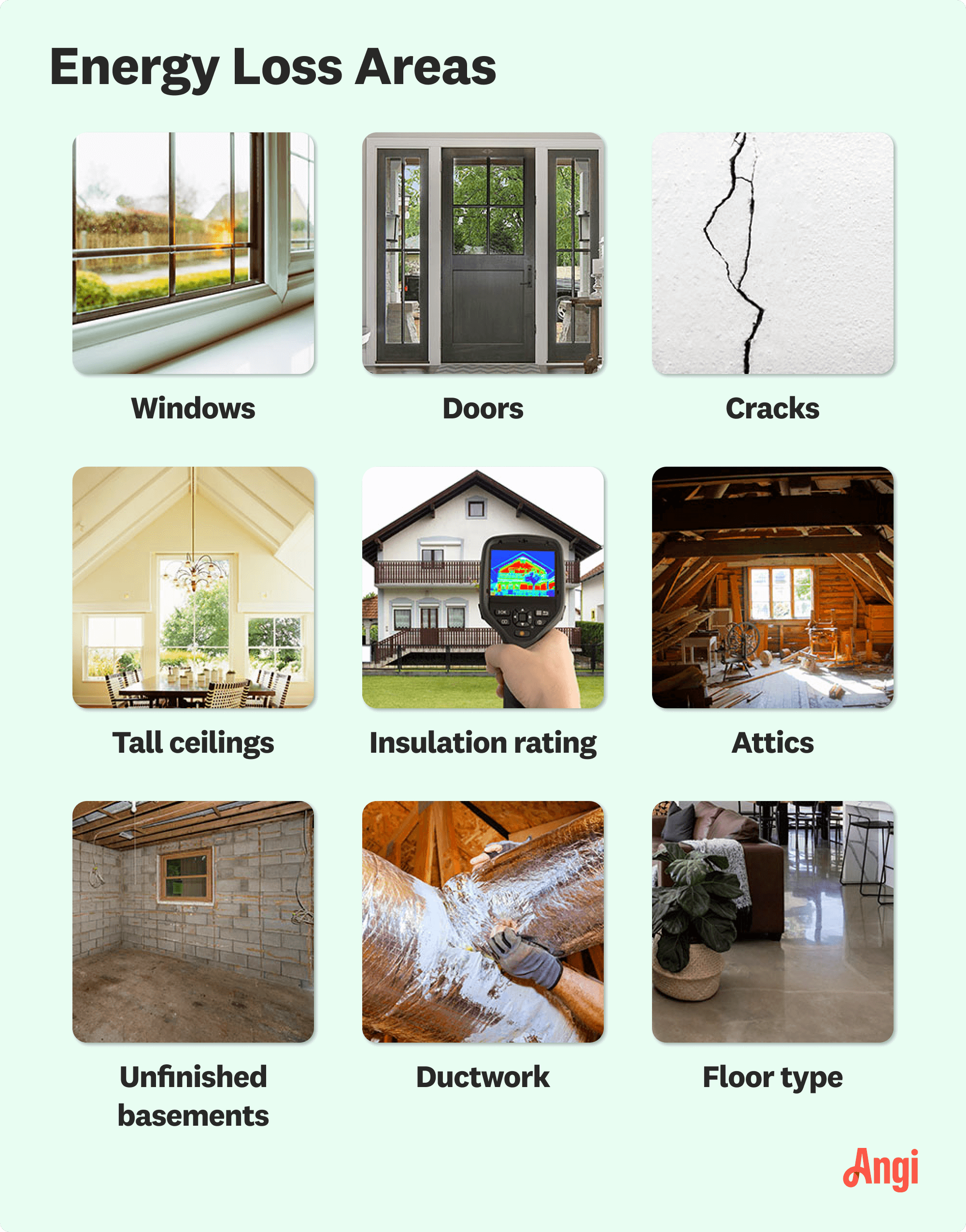
Springing for HVAC maintenance costs may seem like an extra—and easy-to-ignore—item on your checklist, but it will save you money in the long run.
Take the load off your shoulders with our calculator


Manual J load is a complex formula used to determine HVAC requirements.
Doors, windows, floor material, and many other factors influence Manual J load.
Homeowners will likely not be able to do these calculations themselves.
Even handy DIYers should let a pro install or repair their HVAC system.
If you haven’t heard of Manual J calculations, that’s completely normal. This elaborate method of determining the amount of heating and cooling a house demands is a tough project even for an experienced pro. The calculator below will help you understand the unique interplay between your home’s materials and its air system.
To understand heating, ventilation, and cooling systems (HVACs), you need to understand BTUs. BTU stands for British thermal unit and is the amount of heat required to raise the temperature of 1 pound of water 1 degree Fahrenheit. This is an accurate way to measure heat output, which is why it’s used for HVAC units, gas ranges, and other appliances that generate heat.
Common HVAC sizes range from 10,000 BTUs for smaller homes to over 80,000 BTUs for multi-story homes with large ceilings. You can use the reference table below for an approximation of the BTUs required for each home size.
| House Size in Square Feet | BTU Requirements |
|---|---|
| 500 | 10,000–16,000 |
| 800 | 16,000–22,000 |
| 1,200 | 21,000–28,000 |
| 1,500 | 27,000–33,000 |
| 1,900 | 36,000–40,000 |
| 2,300 | 44,000–49,000 |
| 3,000 | 55,000–65,000 |
| 3,800 | 75,000+ |
The formula below is an extreme simplification of a Manual J load calculation, as the full formula would take multiple lines of this page. Manual J load requires calculating the heat gain or loss for each individual area, whether that means a room, door, window, floor, or any other surface that exchanges temperature.
The simplest way to think about a Manual J formula is this:
HVAC BTU Requirement = Area Size (in square feet) x Cooling and Heating Need (per square foot)
For each surface, the heat and cooling transfer depend on area, material, and insulation factor. And that’s just surface calculations. Homeowners need to also account for heat from lights, appliances, how often you open windows and doors, and both the ambient and changing temperature outside.
Almost everything that holds, loses, or generates heat will need to be considered to arrive at an accurate result. As you can imagine, this isn’t a simple undertaking and you need to be accurate. Otherwise, you’ll over- or underload your HVAC system.
There are two ways to calculate your home’s volume: estimations based on square footage and another, more precise method. If you know your home’s square footage and you’re looking for a general idea of BTUs required, you can multiply your total square footage by your ceiling height.
However, this isn’t a very accurate measurement unless you have a one-story home and all of your ceilings are the same height. A much better way (and what we recommend) is to measure each room individually.
Homes with staircases, arched ceilings, and irregular room dimensions will require volume calculations for each room size—a process that can become complicated and time-consuming. If your home is anything other than one-story and with rectangular-only rooms, we recommend passing off this work to a pro.
Manual J load calculations are complex because they need to account for the thermal efficiency of weak points in your home, such as windows, doors, bay rooms, and more.
We lean on pros to calculate these aspects, as even sharp DIYers will need to find or calculate the efficiency coefficients for every single window, door, exposed ceiling, drop roof, and more. To be frank, it simply isn’t worth most people's time, and these calculations can be extremely complex to work through.


A heating or air conditioning pro near you will be able to do Manual J calculations. Most of the time, this will be the pro who will install or replace your HVAC system. It’s not the best idea to part these two pieces out because then you’ll be paying for a separate calculation, something commonly included in HVAC replacement or repair.
From average costs to expert advice, get all the answers you need to get your job done.

Springing for HVAC maintenance costs may seem like an extra—and easy-to-ignore—item on your checklist, but it will save you money in the long run.

If your furnace is malfunctioning, it could be a faulty control board. Find out what a furnace control board replacement costs for parts, labor, and more.

Factors such as labor and parts impact the final price of repairing a window AC unit. Learn all of the costs associated with window air conditioner repair.

Does your furnace need a tune up? Use this furnace maintenance checklist to keep things running smoothly.

Poor airflow and high energy bills? It might be static pressure. Learn what it is, how it affects your HVAC system, and how to get it under control.

This guide goes over the pros and cons of radiant floor heating, an energy-efficient alternative to traditional radiators and forced air heating systems.